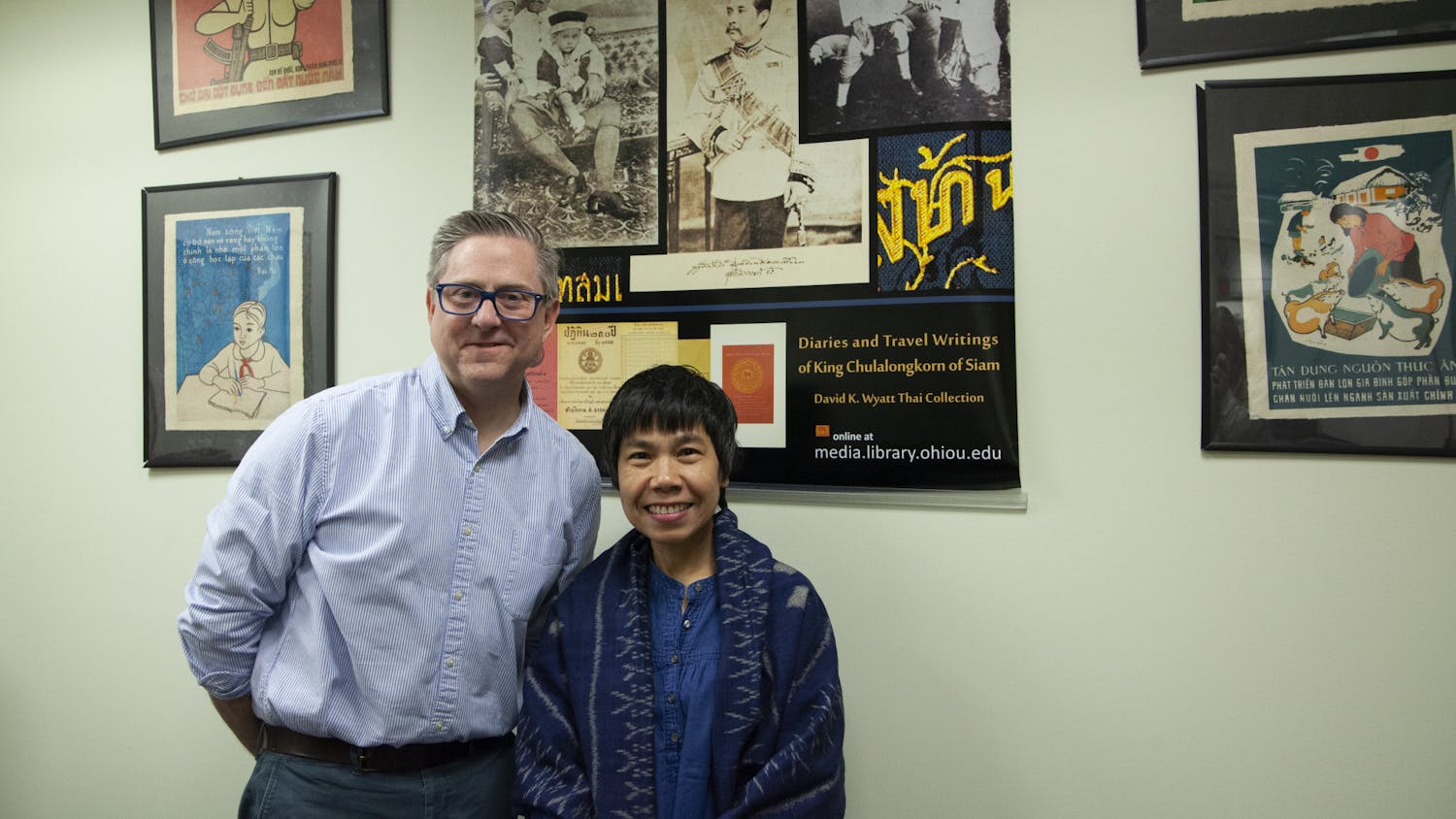A number of students find an appreciation for jazz through jazz ensembles.
Christian Vogelgesang turned his attention to jazz his junior year after spending the start of his undergraduate career focusing on classical piano.
“I wanted to start taking music a little more seriously, especially writing and improvising,” Vogelgesang, a senior studying music therapy, said.
That semester, OU hired Sean Parsons, a “phenomenal” jazz pianist in Vogelgesang’s words, as a full-time professor. Upon connecting, Vogelgesang asked Parsons for private piano lessons.
But Parsons, who had played with renowned musicians such as Clark Terry and Randy Brecker, had further ambitions for Vogelgesang. Parsons urged him to join one of OU’s jazz ensembles.
Vogelgesang had no prior jazz experience.
“Much like many of my classically-trained peers, I was used to using my eyes first in order to read music off of a sheet, instead of actually using my ears to make music,” he said. “(My playing) was terrible at first, and to some extent still is, but I've learned a lot from being thrust into the ensemble and having to learn quickly in order to support the band. I usually describe it as a baptism by fire.”
From the crafty trumpet playing and gravelly voice of Louis Armstrong to the free form styling of saxophonist John Coltrane, jazz has been described as an original American art form. Musicians have been scatting, crooning, swinging and improvising their way through the genre for more than 100 years.
{{tncms-asset app="editorial" id="1a759920-cc40-11e4-a827-0bb1e4a380fa"}}
Although jazz made up 1.4 percent of record sales in 2014, according to a report by Nielsen, Ohio University students still join ensembles and take classes to gain practice in the genre.
In July 2001, the Smithsonian Institution’s National Museum of American History designated April as Jazz Appreciation Month (JAM) as a way to recognize jazz’s impact and legacy as a musical art form.
OU’s Jazz Scene
The School of Music at Ohio University started the jazz program in 1968. Since then, the program has grown to include multiple student jazz ensembles and also includes an annual Jazz Festival, which dates back to at least 1998. Held in April, the Jazz Festival coincidentally coincides with JAM.
The Athens Jazz Festival, which will take place April 17 through 19 this year, gives students the chance to perform with and learn from renowned musicians from universities around the region, Parsons, assistant professor of music theory and jazz, said.
It also gives those in Athens a chance to hear the same musicians and see the OU jazz groups in action, he added.
OU currently has two jazz ensembles and two smaller jazz combos. An average of 17 students are usually in the larger ensembles, while the combo groups range from five to eight members, he said.
Parsons currently leads both of the larger ensembles and one combo. John Horne, adjunct professor of guitar and jazz studies, leads another combo.
Students do not have to be music majors or minors to audition for one of the jazz groups, Parsons added.
There is a also a Jazz Percussion Ensemble, led by Roger Braun, professor of percussion, that showcases the different percussion instruments used in jazz.
{{tncms-asset app="editorial" id="fe7d6876-de3a-11e4-94d5-4bd4864f37b1"}}
An Intro to Jazz
Some musicians are first introduced to the style in middle or high school when they have the opportunity to join a jazz band.
“I would go to music concerts and started getting sound recordings of different jazz musicians, so it started leaking into what I enjoyed with my music,” Parsons said.
But others were introduced to jazz from childhood.
Haley Shaw, a senior, said her father would constantly play Glenn Miller — a bandleader from the early days of swing-era jazz — and they would swing dance together. She started playing bass guitar while in the eighth grade and joined the jazz band in high school.
Shaw started out as a music major before switching to anthropology and classical civilization. Although she’s now moving in a different academic direction, Shaw is still exploring music and is in a music service sorority, Tau Beta Sigma. She joined one of OU’s jazz combos last semester to fulfill a membership requirement.
“It’s been a great learning experience for me and has let me expand my bass performance skills,” she said.
Vogelgesang said his time in the ensembles has introduced him to a number of musicians and given him a deep appreciation of the genre.
“It can be discouraging hearing these guys (professional jazz pianists) play so effortlessly and yet so musically, but it is also motivating to know that they also all started out with no knowledge of jazz piano and become legends through hard work,” he said.
{{tncms-asset app="editorial" id="f09d10be-d965-11e4-9bb3-9f8e217ddeb5"}}
For the Love of Jazz
Seth Alexander, a junior studying music performance, is involved in the Jazz Percussion Ensemble and plays the drums in Jazz Ensemble I and Jazz Combo II, said soloists really stand out in jazz.
“Any group can have a good group of players, but it is when they are exposed individually that gives them freedom and shows their true colors,” he said.
As a performer, the improvisational aspect of jazz is appealing, Parsons said.
“The desire and the urgency to create draws some performers to jazz,” he said. “It’s creating something on the spot and having the ability to convey complex thoughts and ideas through sound. You can do that with many types of music, but that’s what I’m interested in.”
Horne said he is drawn to jazz for the balance between prepared music and room for improvisation. Being able to understand music theory and know how to blend together helps musicians refine their skills in other genres, he added.
“In a band that’s accomplished, everyone is reacting to each other,” he said. “It’s a balance of listening and understanding.”
Though different styles of jazz are performed throughout the world, there are certain songs that translate into a shared experience, Parsons said.
When Parsons was an undergrad, he traveled to Japan, and though he couldn’t communicate with some of the performers, those musicians knew the names of certain songs.
“Jazz transcends spoken word, so when I was in Japan, they would know the jazz song name, and it was the only word that we could communicate, but we’d be so excited that we could play the same literature in different locations.”
Alexander said good jazz ensembles communicate well and play tightly as a group.
“The rhythm section, through the way they play, let's the rest of the ensemble know where they are in the music, what is about to happen next, and if something goes wrong, they are in charge of fixing it,” he said. “Rhythm sections like this should also sound tight, as if all that sound is being played by one person.”
One of the best aspects of jazz is that the genre allows for experimentation, Shaw said.
“Jazz, while still structured, is fun and free,” she said. “You have more freedom to explore things that you’re interested in as a musician.”
@thisisjelli
ao007510@ohio.edu






